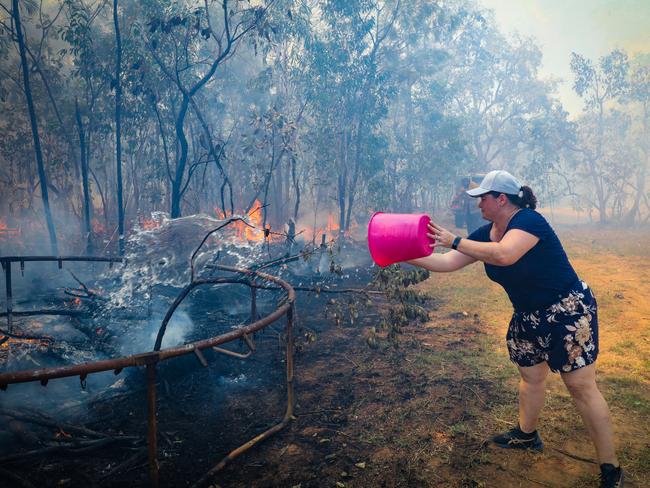Northern Territory long term weather forecast predicts hot and dry summer season
Noticed the heat yet? The Bureau of Meteorology warns there’s more warm weather on the way with a particularly brutal Build Up expected across the Territory.

News
Don't miss out on the headlines from News. Followed categories will be added to My News.
The Territory is expected to sweat through the coming months, as the Bureau of Meteorology’s long term forecast predicts a hot summer in store.
Speaking at an announcement of the BOM’s long range forecast for the upcoming wet season and summer period, Northern Territory Manager Shenagh Gamble said the weather was being driven by El Nino and positive Indian Ocean Dipole effects.
“Both of those climate drivers indicate that we will have a much warmer and drier wet season and summer period than we have had over the past couple of years,” she said.
“The outlook is far higher than average daytime and night-time temperatures.”
Ms Gamble could not put an exact figure on just how much the mercury would soar, but expected “more extreme heat days” in both the Top End and southern regions.
“With both daytime and night-time temperatures being above average that can also lead to more heatwave conditions.”
For Top End residents that could mean a particularly brutal Build Up, with a later start to the rains expected.
“It’s likely that we’ll have a fairly uncomfortable and longer Build Up period here in the Top End … it’s likely that the first monsoon will come in a bit later this year,” Ms Gamble said.

She warned a longer fire season was also playing out, particularly in Central Australia.
“With this later start to the significant rains we are seeing some fires continuing, even around the Top End,” she said.
“As we move more into the summer period, so the hotter and drier conditions in Central Australia, you do expect to see that fire risk really increasing.”
Ms Gamble said the hotter and drier conditions also meant fewer than average tropical cyclones were predicted this season, but severe storms and flash flooding remained a real risk.
Climate change contributing to global heating and warmer ocean temperatures also had a role to play in the extreme weather.
“We have seen an increase in global temperatures of around 1.5C over the past 100 or so years, so this background warming trend does contribute to these increased temperatures that we are seeing happen,” Ms Gamble said.





